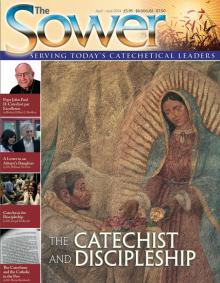Just a few weeks ago I left a coffee shop after an hour-long conversation with a Director of Religious Education, a conversation for me that has seemingly repeated itself over recent years. These conversations usually start with catechists saying: “our Mystagogy is flat”; “we had thirty-something in our catechumenate and now we have an average of three in our follow-up adult-ed program”; and worse yet “our neophytes have little interest in being involved in Church life.” All of these comments focus on what they need to change in their Mystagogy and other follow-up adult-education programs, with no emphasis on the need to change their current catechetical programs. (To some degree this is understandable as we all have the tendency to fix the immediate, rather than go a little deeper.)
After discussing with them their respective follow-up formation programs, I redirected their attention back to their catechumenate programs by inquiring into how they approached catechesis in its nature, structure, method, and content. From these dialogues I discovered that they all had one thing in common: their catechesis had lost its sense of vigor and proclamation of faith and failed to summon the catechumenate into a living, spirit-filled relationship with Christ.1 This proclamation that starts with those all-important words “Jesus Christ loves you; he gave his life to save you; and now he is living at your side every day to enlighten, strengthen and free you.”[2]
For some parish formation programs, zeal for Christ and his message is robust, and it beckons us into a perpetual courtship that is alive and well. For other parish programs, encouragement and reminders are necessary and on going. Collectively, it is imperative we understand that catechizing for discipleship is quintessential to any formation program that is going to be fruitful and life giving.
The rest of this online article is available for current Guild members.
This article is from The Sower and may be copied for catechetical purposes only. It may not be reprinted in another published work without the permission of Maryvale Institute. Contact [email protected]

















